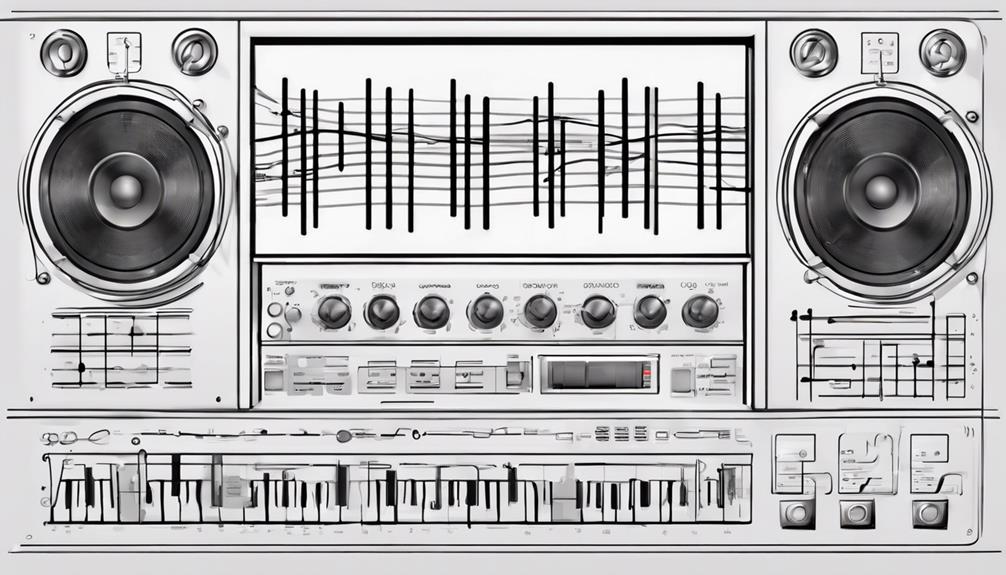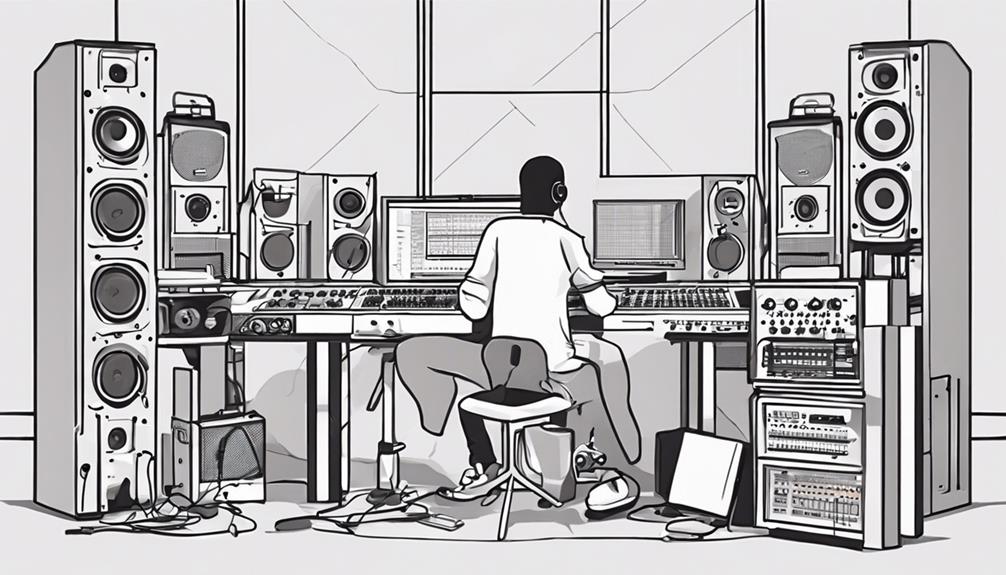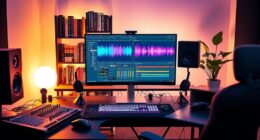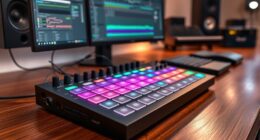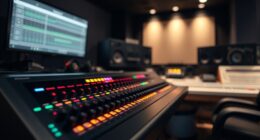To layer music production for a fuller sound, start by using different instruments, sounds, and effects to add depth and richness. Utilize digital audio workstations and virtual instruments for variety. Experiment with effects like delay, reverb, and distortion for unique textures. Mix subtly with volume, panning, and EQ adjustments for balance. Pay attention to frequency ranges, and prevent phase cancellation by aligning waveforms. Layer bass sounds and adjust EQ settings for clarity in the low-end. Combine 808 and kick to enhance the low-end experience. These techniques will help you craft a more complex and engaging musical arrangement. To further refine your production, consider adding ambient textures or background noises to create a sense of space and dimension. Understanding how to mix a track is crucial in ensuring each layer complements the others without overcrowding the sound. Also, don’t forget to use automation to create dynamic shifts that keep the listener engaged throughout the track.
Key Takeaways
- Experiment with combining multiple sounds for a unique blend.
- Utilize EQ adjustments to prevent frequency clashes.
- Layer different elements for a rich and complex mix.
- Enhance depth by combining bass, kick, and 808 sounds.
- Use effects like reverb and distortion for added texture.
Benefits of Sound Layering
To enhance the size and uniqueness of your tracks, sound layering in music production is a valuable technique. Layering sounds allows you to fill gaps in your music, creating a more complete and dynamic output. This technique is particularly effective in adding a unique touch to common sounds like supersaw chords or 808 bass, making your tracks stand out.
By layering different sounds, you can craft a richer and more complex musical arrangement. The combination of various sounds can bring depth and texture to your music, elevating the overall listening experience for your audience.
Music production benefits greatly from the practice of sound layering, as it can greatly improve the quality and depth of your tracks.
In essence, sound layering in music production serves as a powerful tool for achieving a fuller and more professional sound. Embrace this technique to take your music to the next level and captivate your listeners with a unique auditory experience.
Essential Tools for Layering
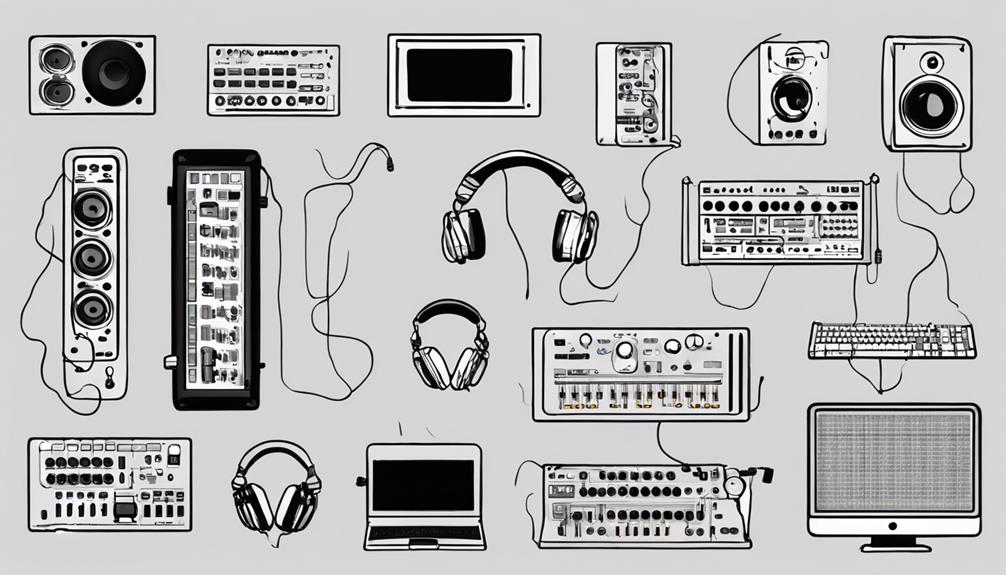
When layering sounds in music production, having the right tools is key to achieving a professional and dynamic result. Here are some essential tools for layering:
- Digital Audio Workstations (DAWs): Programs like Ableton Live, Logic Pro, and FL Studio are indispensable for layering sounds in music production due to their extensive capabilities in recording, editing, and arranging multiple tracks.
- Virtual Instruments and Sample Libraries: These tools offer a vast array of sounds that can be layered to create unique textures and melodies in your music productions.
- Effects Plugins: EQ, compression, and reverb plugins are essential for shaping and enhancing layered sounds, adding depth, clarity, and character to your music.
- MIDI Controllers and Keyboards: These tools facilitate the manipulation and recording of layered musical elements, allowing for a more hands-on and expressive approach to sound layering within your DAW.
Mixing Different Drum Frequencies
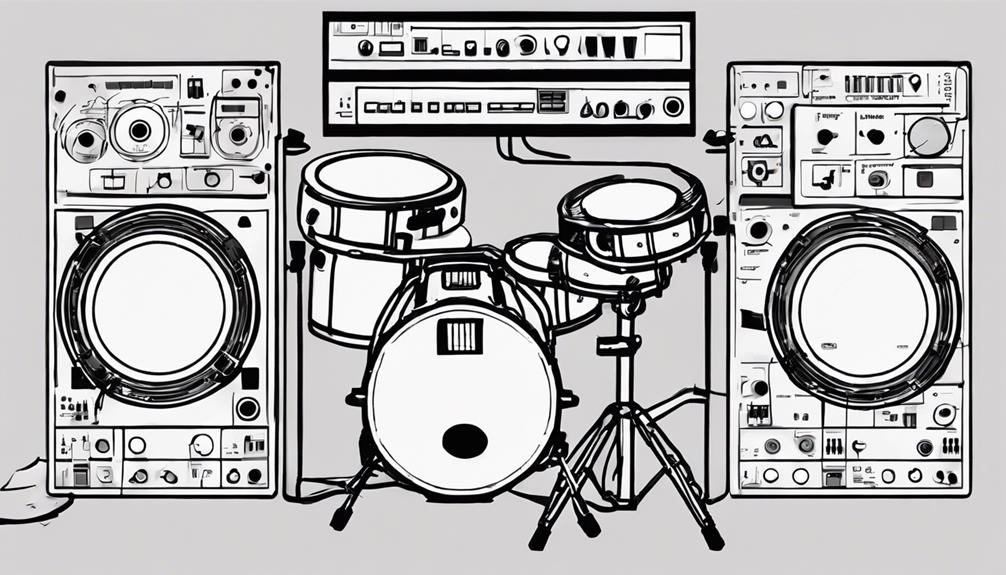
Balancing the volume and EQ of different drum frequencies is vital for achieving a clean and well-rounded mix in music production. When layering sounds, especially multiple drum frequencies like kicks, snares, and hi-hats, it's important to contemplate how each frequency contributes to the overall sound design.
Kicks typically provide the low-end punch, while snares add sharpness and definition to the rhythm. By carefully adjusting the volume levels and EQ settings of each drum frequency, you can prevent muddiness and maintain a balanced mix.
Layering drum frequencies offers the opportunity to create a fuller and more dynamic sound with varied textures and rhythmic elements. Experimenting with effects such as compression, distortion, and reverb can further enhance the impact and cohesion of your layered drum sounds.
Techniques for Layering Basslines
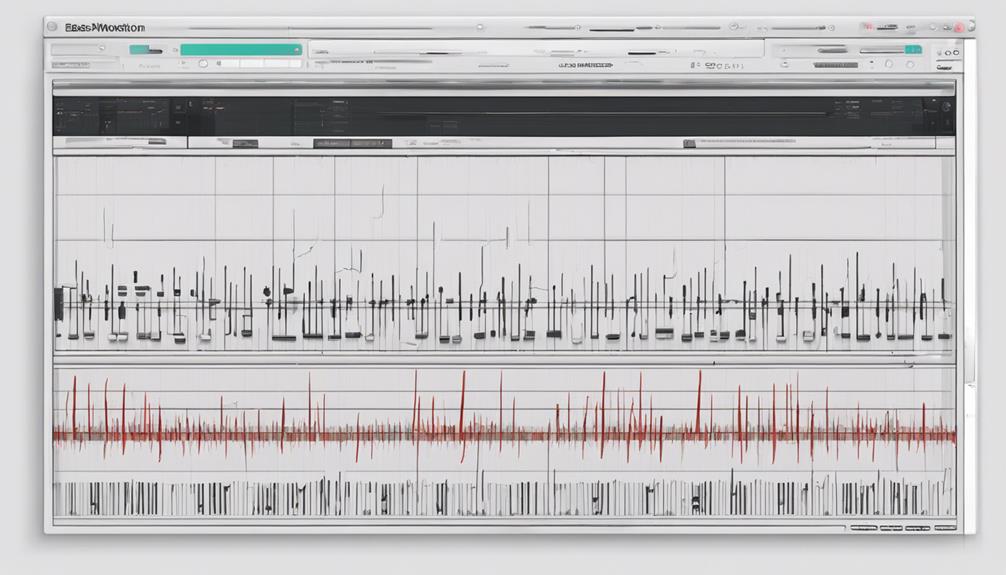
Layering basslines in music production enhances the depth and richness of the low-end by combining multiple bass sounds. To achieve a fuller sound, consider the following techniques:
- Layer Multiple Bass Sounds: Utilize different bass sounds with varying frequencies to cover a wider range and add depth to your mix.
- Adjusting EQ Settings: Guarantee clarity in the low-end by adjusting the EQ settings for each bass layer. This helps maintain frequency masking and allows each layer to shine through.
- Combining Multiple Bass Elements: Grouping bass layers together enables cohesive processing and balancing of the combined bass elements. This approach helps create a unified and powerful low-end foundation.
- Experiment with Different Sources: Explore blending synthesized bass sounds, sampled basslines, and live bass recordings to add unique textures and dynamics to your basslines. Mixing different sources can lead to creative and interesting results in your music production.
Enhancing Depth With 808 and Kick
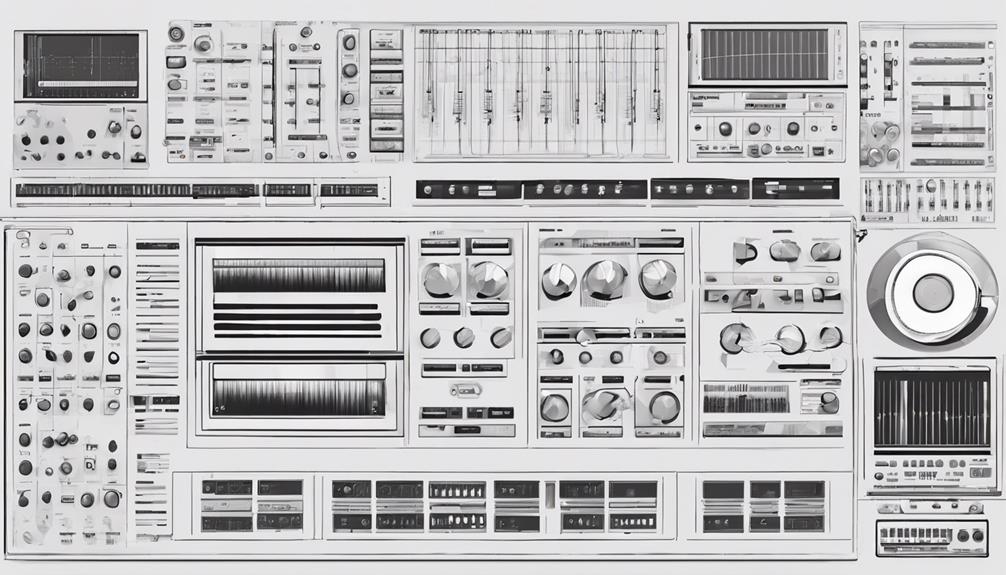
To enhance depth in your music production, consider layering an 808 with a kick drum.
By adjusting the start time and A.D.S.R. of the 808, you can achieve a cohesive and impactful sound when paired with the kick.
Making subtle tweaks like tuning and distortion can further blend the two elements seamlessly for a fuller low-end experience.
Bass Mix Balance
Enhancing the depth of your bass mix with an 808 and kick involves meticulous adjustments to guarantee a cohesive and impactful low-end presence. To achieve a balanced and powerful bass mix, consider the following steps:
- Layering: Combine the 808 and kick drum to create a fuller sound that covers a wide range of low-end frequencies.
- Bass Mix Balance: Make certain that the levels of the 808 and kick are well-adjusted in the mix to prevent one from overpowering the other.
- EQ Adjustments: Make specific EQ tweaks to both the 808 and kick drum to carve out space for each element in the frequency spectrum, allowing them to complement each other seamlessly.
- Synchronization: Adjust the sample start time and ADSR of the 808 to align it with the kick drum, enhancing the overall cohesiveness and impact of the bass mix.
Layering for Impact
Achieving a powerful and impactful low-end presence in your music production involves strategically combining the deep tones of an 808 with the punch of a kick drum. Layering multiple sounds such as an 808 bass and a kick drum can greatly enhance the impact and intensity of your track.
To guarantee a cohesive sound, it's vital to adjust the sample start time and A.D.S.R. of the 808 so that it syncs perfectly with the kick drum. Additionally, making specific EQ and volume adjustments to blend the 808 and kick seamlessly can create a powerful low-end foundation for your mix.
Frequency Range Management
Properly managing the frequency ranges of your 808 and kick sounds is essential for creating a clear and powerful low-end in your music production.
When layering these elements, consider the following:
- Define Frequency Ranges: Assign the kick to the lower frequencies and the 808 to the sub-bass range to maintain a balanced and impactful low-end presence.
- Utilize EQ: Use EQ to sculpt specific frequency areas for the kick and 808, preventing muddiness and ensuring each sound has its own space in the mix.
- Adjust A.D.S.R. Settings: Fine-tune the attack, decay, sustain, and release settings on the 808 to blend harmoniously with the kick's transient, achieving a tighter and more cohesive sound.
- Layer Carefully: By skillfully layering and managing the frequency ranges of the 808 and kick, you can enhance depth, avoid clashes, and ultimately create a fuller and more dynamic low-end in your music production.
Understanding Frequency Ranges
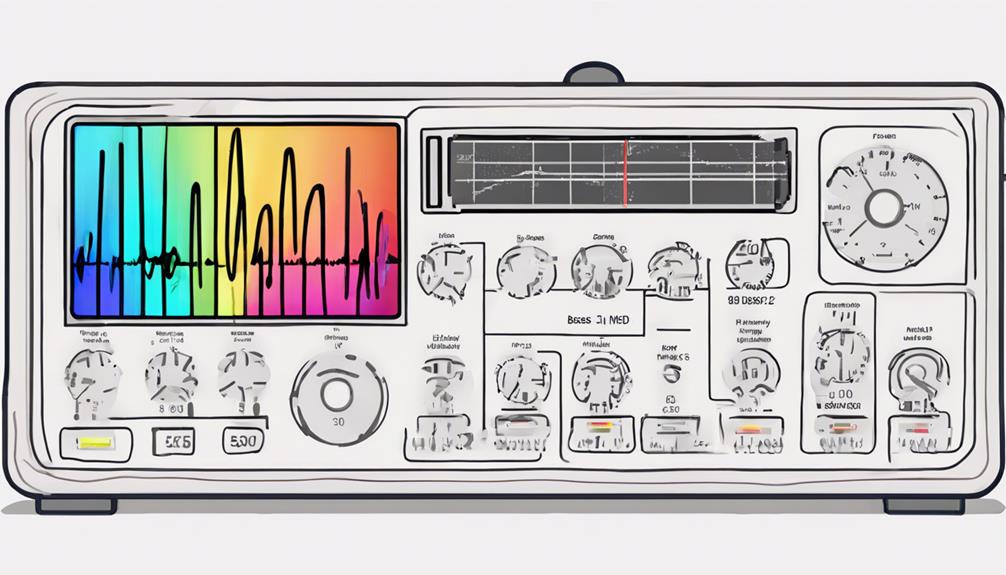
You'll start by grasping the fundamentals of frequency ranges in music production.
Next, you'll focus on refining your skills in mixing low frequencies for a solid foundation.
To conclude, you'll learn the importance of balancing high frequencies to add sparkle and clarity to your tracks.
Frequency Range Basics
Understanding frequency ranges is essential for effectively allocating space to different instruments in a mix. Each instrument occupies a specific range within the frequency spectrum, and balancing these ranges is vital for a well-layered and harmonious sound.
Here are some basics to help you grasp the concept:
- Human Hearing Range: The human ear can typically perceive frequencies from 20Hz to 20kHz.
- Frequency Divisions: Low frequencies, such as bass, lie between 20-250Hz, mids cover 250Hz-2kHz, and highs extend from 2kHz to 20kHz.
- Instrument Frequencies: Different instruments have dominant frequencies within these ranges, so identifying them aids in preventing clashes.
- Clear Sound Balance: Balancing instruments across the frequency spectrum ensures that each instrument is audible and contributes effectively to the overall mix.
Mixing Low Frequencies
Mixing low frequencies involves carefully balancing the 20Hz to 250Hz range in music production to guarantee a solid foundation and prevent muddiness in the sound.
When layering low frequencies, it's important to take into account the frequency content of each instrument to avoid clashes and maintain a clean mix.
Bass instruments such as kick drums and bass guitars typically occupy this lower frequency range and play a significant role in providing warmth and depth to the track.
To achieve a well-balanced mix, use EQ adjustments to carve out space for each instrument within the low-frequency spectrum.
Pay attention to the fundamental frequencies of each sound to prevent them from masking each other and causing muddiness.
By balancing the low frequencies effectively, you can create a clear and powerful foundation for the rest of the elements in your music production.
Remember that a solid low-end is key to a professional-sounding mix.
Balancing High Frequencies
When balancing high frequencies in music production, it's essential to take into account the frequency ranges of instruments to achieve clarity and balance in the mix. Understanding where different instruments lie on the frequency spectrum is vital for creating a well-layered and harmonious sound.
Here's how you can effectively balance high frequencies:
- Identify High-Frequency Instruments: Instruments such as cymbals, hi-hats, and vocals typically occupy the high frequency range, ranging from 2,048 Hz to 20,000 Hz.
- EQ Adjustments: Make precise EQ adjustments to each instrument to prevent harshness or muddiness in the high frequencies, ensuring a clean and clear sound.
- Layering Techniques: Utilize layering techniques to blend high-frequency elements seamlessly, adding depth and richness to the overall mix while maintaining clarity.
- Enhancing Sound Quality: Properly managing high frequencies not only prevents sonic clutter but also enhances the sound quality and fullness of your track, providing a professional and polished finish.
Preventing Phase Cancellation
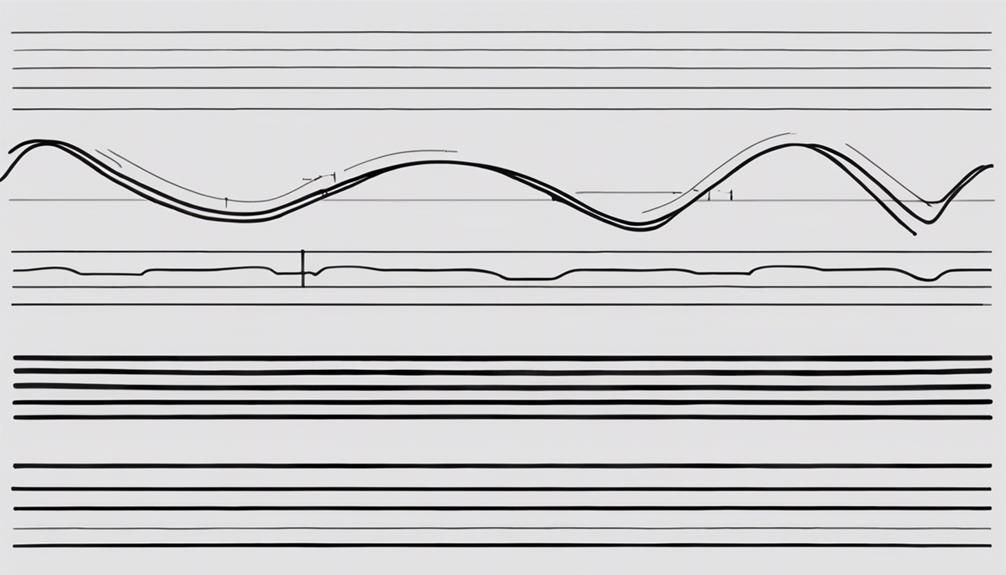
To prevent phase cancellation when layering sounds in music production, make sure that the waveforms of the layered sounds align correctly. Phase cancellation occurs when two sounds of the same frequency interfere destructively, reducing the overall volume and clarity of the mix.
By adjusting the timing or phase of one of the layered sounds, you can guarantee that the waveforms complement each other, preventing cancellation and creating a fuller sound.
Another effective technique is to use phase inversion or polarity flipping on one of the tracks, which can help mitigate phase cancellation issues.
Monitoring the combined waveforms of layered sounds with a phase meter is essential in identifying any cancellation problems and making necessary adjustments to maintain a cohesive and impactful sound.
Experimenting With Effects
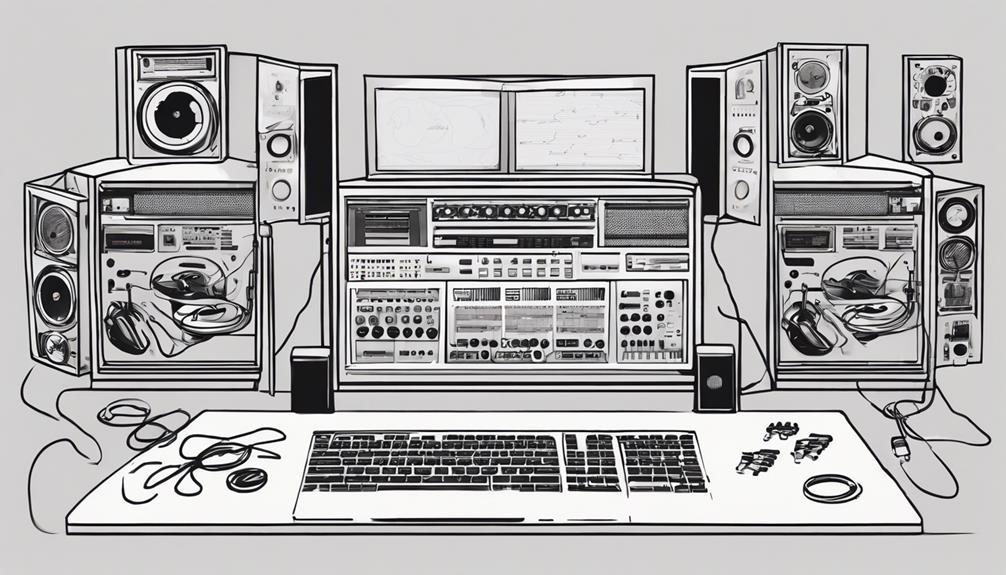
Explore various effects such as delay, reverb, chorus, and distortion to enhance the depth and character of your layered sounds in music production. Experimenting with effects can truly unlock the potential of your tracks and take them to the next level.
Here's how you can make the most out of effects in your layering process:
- Mixing Effects: Use effects like EQ and compression to shape the tonal balance and dynamics of each layer, ensuring they blend harmoniously.
- Layering Effects: Try stacking multiple effects on individual tracks or group tracks to create unique sonic textures and atmospheres, adding complexity to your sound.
- Creative Combinations: Combine effects creatively by automating parameters, adjusting settings, and experimenting with signal chains. This experimentation can lead to diverse sound possibilities and unexpected outcomes.
- Utilize Plugins: Take advantage of effect plugins and software tools to enhance the overall production quality and reveal your creativity in crafting layered music tracks. Experiment freely and let your imagination guide you towards creating a fuller and more dynamic sound.
Subtle Mixing for Full Sound
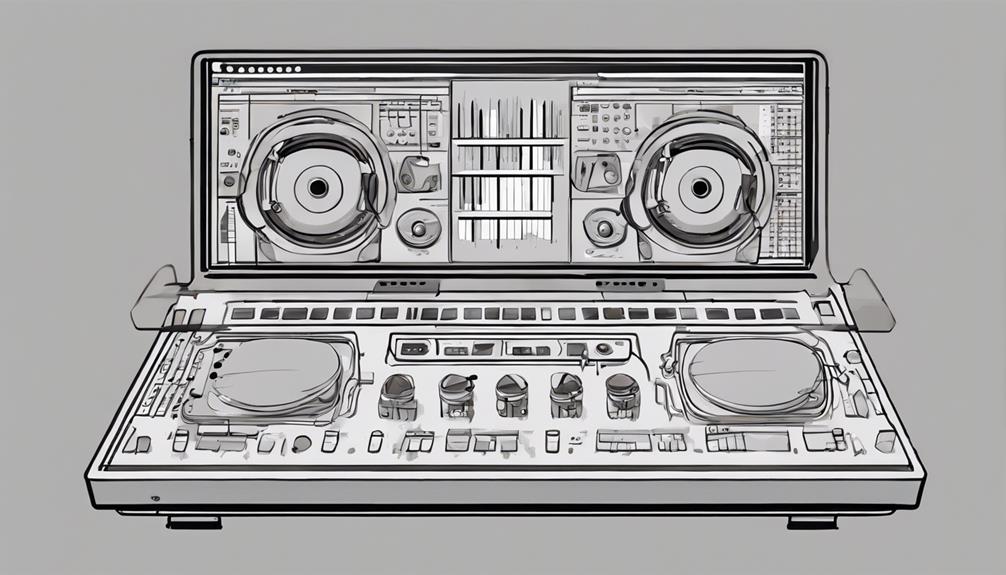
Subtly adjusting volume, panning, and EQ can enhance the fullness of your track without overpowering it. When layering sounds together, subtle mixing plays an important role in bringing out the best in each element. By making minor tweaks to the volume levels, adjusting the panning to widen the stereo image, and fine-tuning the EQ to carve out space for each sound, you can achieve a more cohesive and balanced mix.
Subtle mixing is all about paying attention to the small details that can make a big difference in the overall sound of your production. It helps prevent clutter and maintains clarity, allowing each layer to shine through without competing for attention.
Instead of drastically altering the original elements, subtle mixing aims to enhance and complement them, ultimately leading to a fuller and more polished sound.
Frequently Asked Questions
How Do I Make Audio Layered?
To make audio layered, you record various sounds separately, then blend them using software. This process combines tracks to create a richer, more textured sound. Layering enhances depth and complexity in music production and sound design.
What Is the Layering of Different Sounds Called in Music?
Layering different sounds in music production is commonly referred to as sound layering. By combining multiple audio tracks, you can create a new, complex sound that adds depth, texture, and richness to your music.
What Is Stacking in Music Production?
Stacking in music production is like building a sonic tower. Layering multiple tracks creates depth and richness. Combine vocals, instruments, and effects for a fuller sound. It enhances complexity and intensity, making your music dynamic and engaging.
What Is Layering in Production?
Layering in production involves combining multiple audio tracks to create a more complex and fuller sound. It adds depth, texture, and richness to individual tracks or elements. Used in drums, melodies, and effects for enhanced quality.
Conclusion
As you continue to layer your music production, think of it as building a rich and intricate tapestry of sound.
Each element carefully woven together to create a harmonious whole.
With the right tools and techniques, you can achieve a fuller, more dynamic sound that captivates your audience.
So keep experimenting, keep refining, and watch as your music production blossoms into something truly extraordinary.
Happy crafting!

